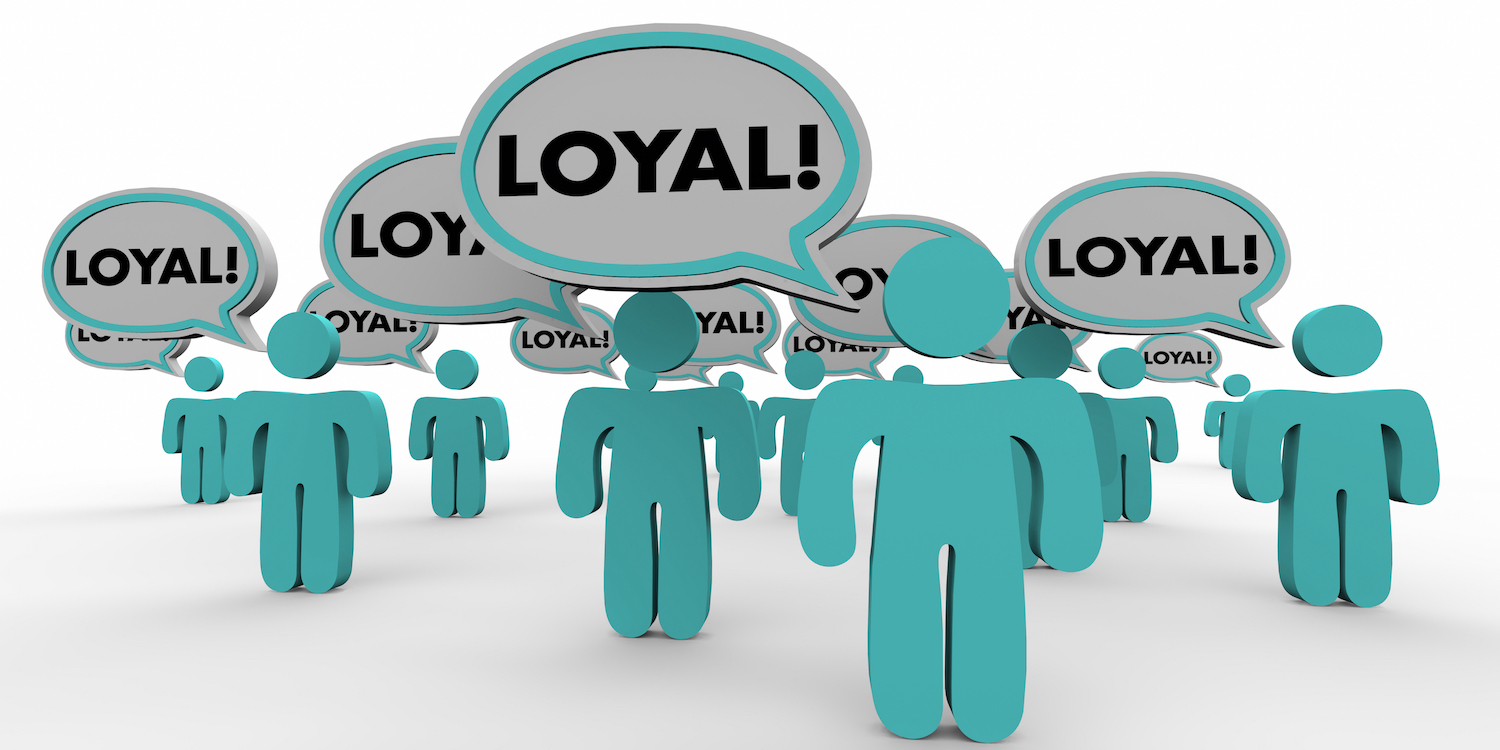
The relationship between lean change and human nature
RESEARCH – Human behavior tends to make change even harder to attain than it already is. This brilliant research paper looks at change from a psychological, technical and leadership point of view.
Words: Art Smalley, President of Art of Lean, author and speaker; and David Mann, organizational psychologist and author
Attend any lean conference and you are bound to be impressed by the improvement stories you'll hear. The continued success of companies like Toyota Motor Corporation also functions as a source of inspiration to many. However, beyond these impressive achievements, there are also plenty of organizations that either fail to get off the ground or, at best, struggle to sustain results.
Lean implementations, by definition, seek change for the better by eliminating wasteful activities. Yet change is not easy, especially when human behavior is involved. In this article we'll talk about the realities of change from multiple angles you need to consider. We'll outline change from a basic psychological point of view, a lean technical point of view, and thirdly as a leadership challenge. Failure to sufficiently comprehend and address any of these different factors can be a major reason why your organization might be struggling.
THE PSYCHOLOGY OF CHANGE
The Japanese word Kaizen involves two kanji characters – Kai ? meaning "change" and zen ? meaning "better". Lean implementation routines are quick to implement some type of concept or tool and expect that the "better" results part will naturally follow. However, human nature and most implementation stories indicate that is not necessarily the case. Implementing "change" and achieving lasting "better" results involves multiple factors that are not always apparent or fully appreciated.
To quote the comic strip Pogo: "We have met the enemy and s/he is us." The most difficult aspect of a lean conversion is sustaining the change and its benefits. Yes, that sounds illogical, but we humans don't readily change our thinking and habits – if at all. In the field of psychotherapy, whose single aim is bringing about new behaviors, this is called "the problem of change." So, it's not just a problem for creating successful lean transformations: it is a known difficulty in virtually every endeavor in life. The difficultly can be observed in many common struggles, such as attempts at weight loss, dietary modifications, quitting smoking, or sustaining exercise routines. Failure to properly recognize this reality up front is a reason why many lean activities struggle from the beginning.
One common example of this problem surfaces when lean enthusiasts talk about doing away with the "old habits" or "old ways." Time out! Those aren't "old" habits, or "old" ways. They are actually current habits, often with long histories of reinforcement, often a basis for career success. It's "the way we do things around here" in the present! The newer ways – even if improved – need time, practice, refinement, and reinforcement mechanisms in order to create new habits of thinking and acting.
We also often mistakenly talk about "breaking" habits and eliminating old ways. "Breaking" implies several characteristics you can easily simulate. Find a wood pencil. Grip it with both hands and your thumbs centered in the middle as a fulcrum. Apply pressure. The result: the pencil snaps, breaking into two splintered pieces. This is a one-time event, a step change in state, one that is irreversible. If only "the problem of change" were that simple! Organizations involve people and processes, which don't snap irreversibly from one state into another like a pencil. Habits do not "break" in this manner. Naturally – habitually – people will gravitate back to the more established and practiced way.
In the language of behavioral science, habits aren't broken; they have to be extinguished. And habits with long histories of reinforcement (think career success) are the most resistant to extinction. In this context, extinction is a continual process, not a single event. As such, extinguishing a habit takes place over time rather than just simply flipping the human equivalent of a light switch. And as a process, extinction in this context is often readily reversible, because the "old" habit often has deep roots. So just like a pernicious weed given an opening, habits tend to return in full force as though nothing had changed.
WHAT WE HAVE LEARNED ABOUT CHANGING BEHAVIORS
What are the psychological mechanisms in thinking, judgment, and decision making that characterize us as humans? Nobel Prize-winning psychologist Daniel Kahneman describes the evidence in detail in his bestseller Thinking Fast and Slow, summing up decades of scientific exploration of how we think. It comes down to two modes of thinking, which he calls System 1 and System 2. These different styles of thinking have analogies in lean implementations, as we will explain.
Think of System 1 as the process of snap judgment. You see something, recognize a familiar aspect of the situation. System 1 immediately kicks in, jumping to a complete conclusion based on fragmentary information, and you take action right now. This mode of thinking likely kept early humans from becoming prey for large predators, and as a result has survived and remained as part of the cognitive equipment in most of us. In organizations this might involve reflexive workarounds without fully considering the underlying cause, or jumping to quick fixes, even in a structured kaizen event.
In contrast, System 2 thinking is reflective, gathering more information, examining the situation and evaluating the evidence in detail. You might recognize System 2 thinking in the experimental attitude lean calls for in the PDCA process (Plan, Do, Check, and Act – or Adjust) and other forms of structured problem solving. This pattern moves deliberately, more slowly in comparison with System 1 and goes deeper into the underlying conditions and causes.
Kahneman is clear that abundant experimental evidence accumulated since the 1970s shows overwhelmingly that our System 2 thinking is, in his words, "lazy." By that, he means that when System 1 jumps to a conclusion, System 2 is most likely to simply go along without reflection. We are by far more likely to jump to a conclusion and action than to take a step back and think. Despite our best intentions, it is relatively rare – even unnatural – that we thoughtfully weigh what we think we know and seek further information before we act. In other words, most of us don't naturally practice deeper forms of problem solving or process improvement very well.
Often times, our current habits are the rewarded and reinforced actions System 1 has led us to take, over and over. Time and repetition have instilled them into us, whether they are positive (like a team leader taking corrective action following the andon cord being pulled) or negative (like a team leader carrying out poor corrective actions, like band-aid fixes).
An illustration of System 2 thinking – as mentioned above – is in the slower, more structured process of problem solving process exploring the root cause of the problem underlying the andon cord pull and call for help. Why did the quality problem actually occur? Why did the valve fail in the first place? In this system, we have to define the actual problem more specifically, set a higher goal, analyze multiple underlying factors, and only then take action aimed at eliminating the true root cause and preventing recurrence, which is far more involved. Checking and follow-up are part of the process as well. System 1 responses are more instinctive in comparison and require less training. System 2 thinking conversely is often counter-intuitive and takes longer to master. As we'll see below, developing System 2 thinking requires repeated cycles of teaching, learning, practice, failures and successes, monitoring, and feedback, over and over for an extended period of time.
One example of this cycle of learning is the classic TPS gemba walk with experienced leadership, managers, and employees. It's not a random walk around or a shop floor tour, as often mistaken. Instead, it's an example of the master-apprentice model of targeted teaching and learning, with repeated cycles of observation, fact checking, and questions (e.g. What do you see here? What is causing the situation? How can we improve it?). When necessary, the dialogue will also shift to include situation specific directions for the benefit of the learner, and an assignment (e.g. Here is what the standard should be in this case. Here is what we expect to happen. Here is when we must get this done to protect the customer. Here are the other parties we need to involve, etc.) And always, another cycle of follow-up (e.g. Let's go and see what actually happened. Did you attain the goal? What did you learn? What next?).
LEAN IMPLEMENTATION AND CHANGE
As explained above, many organizations pursuing improvement don't adequately consider the fundamental psychology of change and integrate it into their implementation efforts. On top of this shortcoming, there can exist shortcomings in the more technical critical thinking component of lean as well. In order to illustrate this latter point let's consider change from a lean technical point of view.
Even though certain tools like standardized work, kanban, error proofing, and A3 reports are widely circulated, the depth and quality of thinking effort involved with them is rarely appreciated. For example, let's just take the general topic of problem solving: fixing the root cause of a problem with proper analysis and preventive recurrence measures sounds simple on paper but rarely is in reality. Getting to a "root"-level cause, for example, might involve deep logic-based analysis like fault trees, cause and effect diagrams, or 5 Why type methods. In any of these cases critical thinking and knowledge of the process in question is required for rigorous analysis. Or more complex problems might require use of more advanced analytic tools or statistical approaches. Many lean efforts fail to appreciate this reality and naively expect to quickly "brainstorm" the root cause of a problem by simple conjecture. In other words, our lazy System 2 thinking allows System 1 snap conclusions to stand again and again.
In order to properly illustrate this point let's consider a fundamental step of problem solving – the step of establishing corrective actions or countermeasures. One good way to assess countermeasures is to categorize them as either 1) administrative, 2) detection based, or 3) preventive in nature. The first category – administrative – is the most common angle we see, which typically involves training, supervising, inspecting, auditing, or any other approach that attempts to influence human behavior, or seeks to "check up" on the process better. Unfortunately, this approach is the weakest form of corrective action in nature and yet is by far the most common we see attempted by organizations. In addition, administrative changes require the highest degree of human behavioral change involved. In hindsight, there is little wonder why this approach often fails to displace the embedded current standard or habit.
The second and more effective category of corrective actions in problem solving is that of detection. Detection can involve simple error proofing concepts or more complex controls depending upon the level of risk involved. In lean cultures like Toyota, this is commonly referred to as "building-in quality" or Jidoka in Japanese. Failure to achieve the desired condition or creation of an abnormal condition triggers detection and temporary stoppage of the process in question. Supervision is forced to respond to the situation in order to silence alarms, lights, or restart stopped processes. By design it does not allow the situation to be ignored and escalates automatically to another level of management if the desired behavior is not initiated. In this case a higher technical level of corrective action is attained and a system of reinforcement is established by lights, sounds, escalation protocols, and other daily management means. This type of corrective actions virtually always leads to better results.
The holy grail of problem solving is to eliminate the underlying causes of the problem and, at minimal cost and time, prevent it from ever recurring. This is our third category of countermeasures – those preventive measures that stop problems from occurring in the first place. This might involve a fundamental change in the process, layout, design, or process controls. Of course the spirit of lean lives by the mantra of creativity before capital. We are not advocating the most expensive or technical solution in this category. The best solutions, however, strive to eliminate the underlying conditions that caused the problem to occur. A good example is the well-known Toyota 5 Why case where eventually adding a strainer to the inlet port of a machine's lubrication system prevented metal chips from entering and damaging the system. Once solved in this fashion, minimal behavioral change on the part of a person is required and the corrective action also effectively prevents recurrence of the problem. This solution space is by far the most robust of our three categories and most likely to stick from a human behavioral point of view as well.
From our experience, the more successful lean implementations tend to go into this in-depth consideration of lean thinking, logic, application, and follow-up and the associated degree of behavioral modification involved. Specifically, in our problem-solving example, it involves Kahneman System 2 type thinking, getting to deeper understandings of cause and effect, and fundamental changes in behavior. Sadly, just posting a standardized work chart in an area to improve productivity or holding a meeting to reduce defects rarely works. Consideration is always applied in proportion to the urgency or criticality of the issue in question. Training (administrative control) of course is a necessary part of the equation involving behavioral change. By itself however, training is frequently not sufficient. In conjunction with standardized work, for example, some form of error proofing or detection may also be required to attain results. So might managerial audits or other follow-up. The combined approach strengthens the likelihood of sustained success. The best solutions of course eliminate the underlying problem by making changes in the process (or product) and by consistently addressing the related behavioral habits until they are extinguished.
LEADERSHIP AND CHANGE
The words and actions of Taiichi Ono and his implementation successes at Toyota Motor Corporation bear reflection in relation to this topic and offer some basic guidance. Although his period of management was decades ago, the basis of what and how he taught, in our experience, still applies today in many ways. Let's look at three common elements associated with Mr. Ohno through his writings and the eyes of a couple of his subordinates.
The first challenge he issued to leadership at all levels was to "eliminate" the waste in any given process at the proverbial "5th Why" level of thinking. His advice specifically meant eliminating the underlying problematic conditions that allowed the problems to occur in the first place. By definition that is a System 2 type of thinking pattern and not System 1. His mantra was not simply to explain, administer, train, inspect, or measure waste. Like the pencil breaking analogy used earlier, the challenge was to extinguish the waste permanently. People – as we noted – are not pencils. Methodically extinguishing the current habit or underlying conditions in some fundamental way is necessary if you expect improvements to be sustained.
Secondly, although he was not a trained behavioral psychologist by any means, Mr. Ohno apparently knew what it took to change behavior in his subordinates. During his heyday of management, the andon system of detection and managerial escalation was fully integrated into his style of operating system. Abnormalities in materials, quality, production rates, or process conditions were all hard wired by design to highlight problems as rapidly as possible. In reality, this system helped to create the basis for structured behavioral reinforcement in the organization. Reinforcement mechanisms are critical when change is involved: for example, alarms, music, lights, or timers all go off in the TPS style of production. Additionally, in the management office Ohno shared with his subordinates, clocks showed minutes of downtime for all production lines. As one of his former engineers Tomo Harada relayed to us, "you knew Mr. Ohno was coming to see the problem first hand after a certain amount of time had transpired and we acted accordingly. We were 'motivated' to get there first and have a good handle on the situation by the time he showed up to start asking questions or in some cases give specific directions."
A third common refrain from Ohno protégés, however, pertains to thinking routines and behavioral actions. It is around this third avenue of anecdotes we get a fuller sense of the depth of his innate understanding around the complexities of change management and behavioral modification. Retired Toyota Managing Director of Global Purchasing Terayuki Minoru once spoke about his experiences with Ohno and improvement efforts. Recalling being asked to solve problems by Ohno, Minoura says, "I don't think he was interested in my answer at all. I think he was just putting me through some kind of training to get me to learn how to think." A common theme that emerges in similar anecdotes is that insightful (or astute) leaders like Mr. Ohno and others in Toyota took great care to observe your actual behaviors on the shop floor as the basis for assessing and coaching your actual thinking patterns. Change in employee behavior often requires change in how leaders themselves coach and act in the first place.
TO SUMMARIZE
In this article we've attempted to explain why the topic of change is not necessarily easy to accomplish or sustain. Quite the opposite: most of human history and behavioral research indicate that change is quite difficult and won't always stick even if it is for the better (i.e. kaizen). Even though no two situations are quite alike, some common themes are always good for leaders to keep in mind during their lean journey. That's why we offered up three pieces of advice for leaders pursuing improvements.
First, remember that change is often difficult and not about fighting "old" ways. In reality you are attempting to change the "current" way and move onto a "newer" way. That change involves ideally extinguishing previous habits or activities and locking in the new way. Just holding a kaizen event, posting a standardized work chart, or telling people to conduct training is not likely to work. The fundamental elimination of the problem and the establishment of relevant reinforcement mechanisms are critical elements to consider.
Secondly, remember the three categories of countermeasures in a problem solving format: administration, detection, and prevention. 80 to 90% of the time we see organizations attempting administrative countermeasures, which also involve the highest degree of human behavioral change. Not surprisingly we see these approaches fail the most often, as they involve the poor intersection of weaker solution space and more difficult human behavioral change involved. More successful lean transformations involve better detection- or prevention-related solutions and usually more advanced forms of behavioral reinforcement.
Lastly, we want to reinforce that in our opinion none of this happens by chance or leaving things alone. Nature is subject to the process of entropy. Similarly, organizations need specific actions by management, otherwise processes tend to revert back to their original condition. Behind every lean success story there is a leader like Taiichi Ohno in Toyota who confronted problem solving and people development simultaneously. Poor technical thinking in terms of problem solving and poor people development equate to a lack of results in every case we run across. Superior critical thinking (e.g. problem solving) plus human development (e.g. respect for people) make for greater results that also stick better in the long run.
THE AUTHORS

Art Smalley is an author, consultant, and speaker with many years of experience in aiding companies with the Toyota Production System. He worked at the Kamigo engine plant in Japan where Taiichi Ohno was the founding plant manager and he learned the principles of lean first hand from many experts. During his time with the company, Art helped set up multiple Toyota facilities and trained people from around the world. After Toyota, Art worked as Director of Lean for Donnelly Corporation and practice expert at McKinsey & Company. Art is the recipient of multiple Shingo Prize awards for his books, which include A3 Thinking, Creating Level Pull, and Toyota Kaizen Methods.

David Mann is the author of Creating a Lean Culture: Tools to Sustain Lean Conversions, awarded the Shingo Prize for Operational Excellence, now in its 3rd edition. He developed a lean management system to sustain lean gains in response to widespread failure to sustain the results coming from applying lean tools alone. He has 25+ years lean experience in manufacturing, administrative, and technical-professional workplaces. David is a Ph.D. psychologist and the principal of David Mann Lean Consulting.
Read more


RESEARCH - Offering us a glimpse into how the human mind works and into Toyota's approach to people engagement, this article tells us how to create a better working environment for our employees.


FEATURE – Construction is rife with waste, and yet lean is not widely adopted in the industry. The authors highlight how lean could benefit the sector, emphasizing the importance of developing problem-solving capabilities.


FEATURE – We start the new year with a reminder to put customers first, always. It is they who make our business and keep our lean initiatives true, says the author.


FEATURE - Develop your people if you want to develop a better (lean management) system in your business. This is the key message of this article, which looks at the role of management in an organization and in society.

